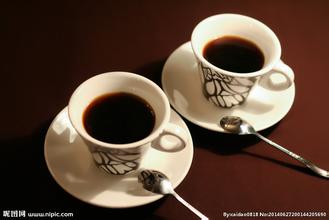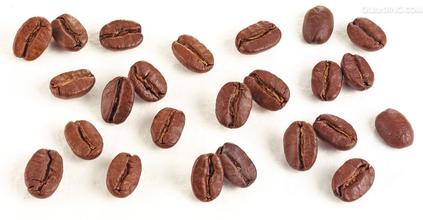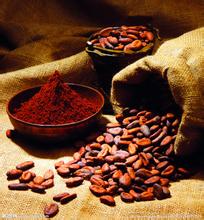Introduction to the characteristics of Hawaiian Coffee Flavor description method with strong Acid and Alcohol
Although Hawaii is often affected by tornadoes, the climatic conditions are very suitable for the coffee industry. There is plenty of rain and sunshine, and there is no worry of frost. In addition, there is a strange natural phenomenon called "free shade". On most days, around 2 o'clock in the afternoon, white clouds appear in the sky, providing the necessary shade for the coffee trees. In fact, it is such superior natural conditions that make Arabica coffee in the Kona region produce more coffee than any other plantation in the world, and always maintain high quality, unique growth and climate environment to create a stronger coffee flavor. For example, 560 kilograms of coffee per hectare are produced in Latin America and 2240 kilograms per hectare in Kona.
But to the regret of coffee fans, only about 1400 hectares of coffee is produced. And because of Hawaii's high income and a large number of tourists, Kona coffee is so expensive that it is even sold as "konablend" (no more than 5 per cent of Kona beans). In recent years, neighboring islands such as maui, kauai and molokai have also begun to grow coffee commercially.
Hawaii's coffee industry has to compete with the expanding tourism industry. Most coffee is grown on the slopes of MaunaLoa. Mauna Loa was originally a volcano located in the western part of the Kona region on the island of Hawaii. The coffee producing area is about 30 kilometers long and its growing areas are mainly concentrated in the north and south of the area. Coffee trees are planted in relatively desolate areas, but their soil is fertile and contains volcanic ash. Although it takes a lot of physical labor to start planting and it is difficult to manage, it is comforting that Kona's coffee trees (at least those growing above 90 meters above sea level) do not seem to be affected by any diseases and insect pests
Taste
Taste characteristics: strong acid, mellow, all have tropical flavor. Fragrant, similar to Blue Mountain Coffee, but with a little bitterness in the mouth, giving people a feeling of vicissitudes and maturity, suitable for drinking alone at dusk.
Flavor
Flavor: smooth, fragrant, with attractive nutty aromas.
Fried culture
The best frying degree: medium ~ depth
Product
Due to the limitations of the production process, the raw beans of Hawaiian Kona Coffee are usually individual beans, usually 100 packages of single coffee beans.
Develop
Kona coffee is indeed a treasure in the world, very real Kona coffee, not easy to find. The main Kona coffee beans from Hawaii can only be found in Hawaii, as described below.

Important Notice :
前街咖啡 FrontStreet Coffee has moved to new addredd:
FrontStreet Coffee Address: 315,Donghua East Road,GuangZhou
Tel:020 38364473
- Prev

Strong character of Colombian Coffee Flavor description Grinding degree characteristics Manor introduction
Colombian coffee has a silky taste. Colombian coffee is equated with high quality and good taste. It is sweet in acid, low in bitterness, rich in nutrition, with a unique sour and mellow taste, and the sour, bitter and sweet flavors of Colombian super coffee match well. Unique fragrance, after drinking, the aroma fills the whole mouth. Put the fragrance in the mouth
- Next

Delicious Costa Rican Coffee Flavor Description Grind Characteristics Variety Introduction
Costa Rica's coffee industry, formerly controlled by the Instituto del Café de Costa Rica (ICAFE), has been taken over by the Official Coffee Council (Oficina del Caf). Among coffee exports, those deemed substandard are colored with blue vegetable dye before being recycled for domestic sale. Coffee consumed domestically
Related
- Detailed explanation of Jadeite planting Land in Panamanian Jadeite Manor introduction to the grading system of Jadeite competitive bidding, Red bid, Green bid and Rose Summer
- Story of Coffee planting in Brenka region of Costa Rica Stonehenge Manor anaerobic heavy honey treatment of flavor mouth
- What's on the barrel of Blue Mountain Coffee beans?
- Can American coffee also pull flowers? How to use hot American style to pull out a good-looking pattern?
- Can you make a cold extract with coffee beans? What is the right proportion for cold-extracted coffee formula?
- Indonesian PWN Gold Mandrine Coffee Origin Features Flavor How to Chong? Mandolin coffee is American.
- A brief introduction to the flavor characteristics of Brazilian yellow bourbon coffee beans
- What is the effect of different water quality on the flavor of cold-extracted coffee? What kind of water is best for brewing coffee?
- Why do you think of Rose Summer whenever you mention Panamanian coffee?
- Introduction to the characteristics of authentic blue mountain coffee bean producing areas? What is the CIB Coffee Authority in Jamaica?

